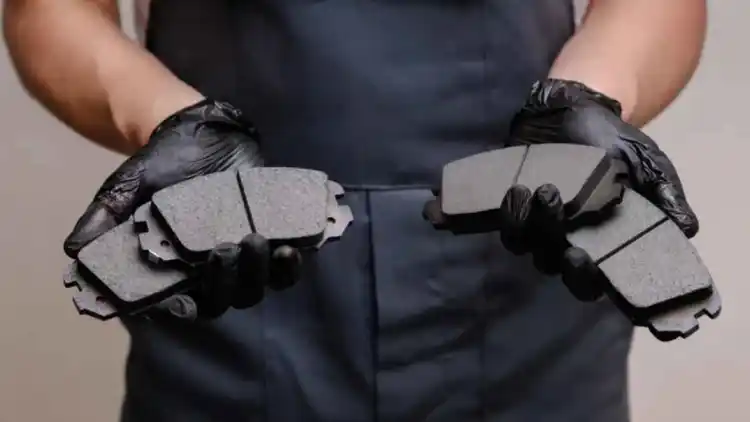- What is V Line Design?
- Why is V Line Design Popular?
- Components of V Line Design in Cars
- How is V Line Design Shaping 2025 Automotive Trends?
- Should You Consider a Car with V Line Design?
- FAQ
Automotive design is constantly evolving, and one of the most striking trends to emerge in recent years is V Line Design. Combining bold aesthetics with practical advantages, this design approach is transforming how we perceive and interact with vehicles. Its distinct “V” shape is no longer exclusive to sports cars; it’s spreading across a variety of vehicle categories, promising a future of daring and efficient car designs.

What is V Line Design?
V Line Design refers to the design approach where a car's surfaces, especially its front profile, are constructed around a “V” motif or configuration. This visual dynamic is apparent in areas like the grille, hood, and headlights. More than just an aesthetic strategy, V Line Design enhances aerodynamics, contributes to fuel efficiency, and enriches the car’s driving performance. Cars with this design often evoke a sense of power, motion, and sophistication.
Why is V Line Design Popular?
The rising popularity of the V Line Design in the automotive world can be attributed to several influential factors:

1. Dynamic and Modern Appeal
The sharp visual created by the “V” configuration is eye-catching and bold.
It gives vehicles a sporty and elegant touch, making them appear active and innovative.
Luxury and performance-oriented cars often leverage this design to elevate their market presence.
2. Improved Aerodynamics
The shape naturally reduces air resistance, helping vehicles achieve better fuel efficiency.
By improving airflow around key areas, the design enhances driving stability at higher speeds.
It supports the automotive industry’s push for sustainable and energy-efficient solutions.
3. Strengthening Brand Identity
V Line Design helps car manufacturers establish a unique visual identity.
Some brands use this as a signature element, making their models instantly recognizable.
The design reflects the manufacturer’s commitment to innovative and futuristic trends.
Components of V Line Design in Cars
V Line Design is a combination of refined elements that work harmoniously. Together, they deliver a cohesive and attractive look:

1. Front Grille
The grille often showcases a dramatic “V” pattern, which serves as a focal point.
It’s not just ornamental; it plays a core role in airflow management and engine cooling.
2. Hood Lines
Subtle yet impactful, the “V” edge lines on the hood spread toward the windshield.
These lines emphasize strength, giving the car a bold profile.
3. Headlights
Sharp and angular headlights complement the overall shape, creating a seamless aesthetic.
LED advancements integrate well with this form, offering both style and energy efficiency.
4. Lower Bumper and Undercarriage
The “V” curvature extends to diffusers or bumpers, emphasizing sporty vibes.
These elements work together to maintain balance between beauty and functionality.
How is V Line Design Shaping 2025 Automotive Trends?
As technology and consumer preferences change rapidly, V Line Design remains at the forefront of innovation. It’s influencing the direction of several key trends:

1. Electric and Self-Driving Cars
Electric vehicles often utilize this design to appear sleek and futuristic.
The low-resistance aerodynamic advantage allows EVs to get more miles out of every charge.
2. Small SUVs and Crossovers
Compact SUVs benefit from V Line Design as it increases their visual appeal.
This design provides a sturdy look while retaining the smaller frame’s practicality.
3. Personalization
Car owners now have customization options inspired by V Line Design.
From bespoke grilles to specially designed trims, aftermarket upgrades are readily available.
4. Eco-Friendly Features
Automakers are using sustainable manufacturing processes to create cars with V Line elements.
These efforts align with international climate standards.
Should You Consider a Car with V Line Design?
For those who want their vehicle to stand out, prioritize efficiency, or value cutting-edge design, choosing a car with V Line Design is a wise choice. Here’s why:
Sporting enthusiasts will appreciate the bold and dynamic look.
Eco-conscious buyers benefit from the aerodynamic advantages.
Fans of modern aesthetics can enjoy futuristic and sophisticated vehicles.
FAQ
Q: What kind of vehicles showcase V Line Design?
Vehicles such as sports cars, luxury sedans, electric cars, and compact SUVs commonly feature this design.
Q: Does V Line Design improve driving performance?
Yes, it enhances aerodynamics, providing better stability and fuel efficiency.
Q: Is it possible to modify my existing vehicle with V Line Design features?
Aftermarket customization options include trims, grilles, and other design elements to introduce a V Line-inspired look.
Q: How expensive is it to maintain cars with V Line Design?
Maintenance costs depend on the complexity and materials but are generally comparable to vehicles lacking this feature.
V Line Design promises a balance of beauty, performance, and futuristic style, making it a standout feature in modern and upcoming automotive models.
Read More:
Kia Sorento 2022: A Comprehensive Guide to Features and Benefits
HiPhi Z Price: Everything You Need to Know About the Futuristic EV
Honda Accord 2022: A Comprehensive Look at This Reliable Sedan













